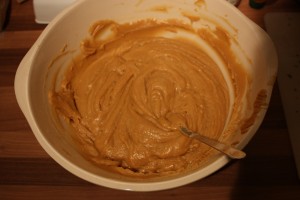Despite it being well into April, there’s still no real sign of spring approaching… though at least the snow has now gone and the temperatures overnight no longer dipping too far below freezing.
As a result I’ve been unable to do any proper hive inspections, other than a few short visits to the apiary to tidy the shed, sort out some equipment, and on one occasion see enough bees flying to know that the hives are (or perhaps were?) still hanging in there!
While it can be a bad idea to feed the bees syrup or pollen substitute early in the spring, and encourage brood rearing when there is still a risk of cold weather, it now seems likely that without a supplementary feed there won’t be any brood or adult bees left to forage when spring does get going.
As a result I’m feeding both spring syrup (1:1) and pollen substitute this week. I’ve not had a need to use pollen substitute before, given the prevalence of nearby sources, including gorse, witch hazel, willow and crocus - but this year none of these are yet in flower.
Pollen substitute is easy to make - it’s a simple protein and fat supplement, bound together with thick sugar syrup to both help form patties, and prevent fermentation. The recipe can be fairly variable, but the usual recipe is as follows:
3 parts Soya Flour
1 part Brewer’s Yeast (inactivated)
1 part Dried Skimmed Milk Powder
For every 500g of dry powder, add 1 litre of 2:1 syrup - which is make with approximately 1kg of sugar and 500ml of water. Mix together well to remove any big lumps while the syrup is still warm, and then leave to cool for an hour or two and allow the flours to absorb the liquid. Shape into rounds and flatten out between pieces of greaseproof paper. It is easiest to divide it up into approximately 100g pieces.
Apply the patties direct to the top bars of the hive, leaving the top piece of paper on to prevent drying out.
Different source recommend different amounts - however expect to have to feed your bees between 250g and 1kg of supplement, depending on the scarcity of pollen and the demand of the colony.
Once you start feeding pollen, you will need to continue doing so as the bees will rely on it until natural pollen sources are available. However, try not to feed pollen substitute for too long a period, as it is a stop-gap, rather than a complete replacement for the pollen, which is more nutritious for the bees. It is also advisable to feed the bees sugar syrup at this time as well, as honey stores will be running low.

